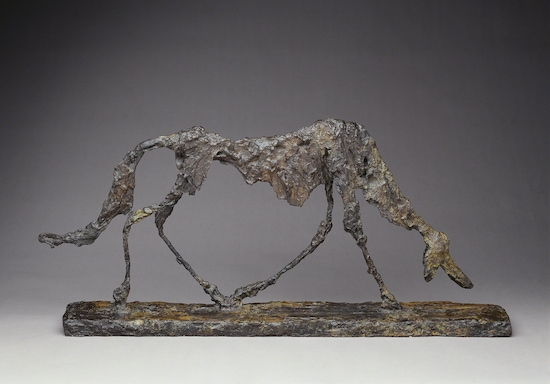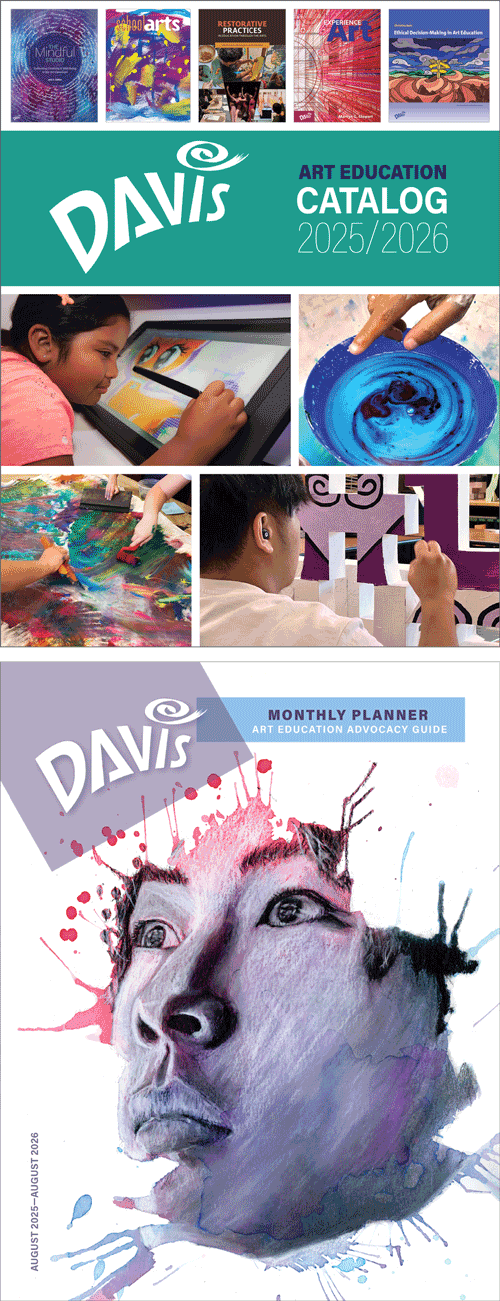Lost Dog Awareness Day: Giacometti
On April 23, 2014, Lost Dogs of America created and launched the first National Lost Dog Awareness Day (NLDAD), a canine-focused day aimed to bring attention to all dogs that are lost each year, while also celebrating the thousands of lost dogs successfully reunited with their families. The Day reminds the public that “not all stray dogs are homeless dogs."
National Lost Dog Awareness Day, 23 April: art by Alberto Giacometti (1901–1966, Switzerland)
Alberto Giacometti was a pioneer in constructed sculpture.
 |
| Alberto Giacometti, Dog, 1951, cast 1957. Bronze, 44.2 x 96.8 x 15.7 cm. Hirshhorn Museum and Sculpture Garden, Smithsonian Institution, Washington, DC. © 2025 Artists Rights Society (ARS), New York. (SI-151giars) |
During World War II, Giacometti struggled with producing a type of sculpture that had connection to his personal experience and memory. The style that evolved was characterized by elongated, emaciated figures appearing singly or in groups. These figures have some similarities to ancient sculpture, but they are also characterized by the rough surfaces that reveal the artist's finger impressions from the plaster model. This allowed the surfaces to achieve a variety or marks and patina. It also gives the subtle impression of ancient votive works in bronze. Such active surfaces are also attributable to the influence of Rodin.
As Giacometti’s career was about a deep investigation of the individual, and portraiture, and humankind’s place in the world. At most, he made four sculptures of animals—a cat, a dog, and two horses. All four of these animals were made of plaster on the same day, and cast later in bronze. Giacometti's inspiration for a gaunt dog hanging its head was related to the artist seeing a stray dog once in the rain, and later, while walking in the rain, depressed, equating himself with his memory of the dog, he made the sculpture.
The madness and waste of World War I (1914–1918) in Europe convinced many artists that art should not represent the rational, "thinking", physical world, but rather the pristine world of the subconscious. This resulted in the movements Dada and Surrealism, which explored the irrational, the spontaneous, the anti-aesthetic, and the world of dreams and fantasy. The effort was to supplant the traditional conceptions of valid art with states of thinking that did not result in death and destruction.
A similar reaction occurred after World War II (1939–1945) in Europe. Existentialism became a dominant philosophy to counter the pointless violence and insanity seemingly unavoidable in Western society. This philosophy proposed that an individual, and not society, institutions or religion, was solely responsible for giving meaning to life. This belief system was especially appealing to artists.
After studying art at the School of Industrial Arts in Geneva, Giacometti studied in Italy, where he was impressed with Italo-Byzantine art and by the art of the Futurists. Moving to Paris, he studied under the realist/classicist sculptor Antoine Bourdelle (1861–1929), who had been a pupil of Auguste Rodin (1840-1917). By the end of the 1920s, those influences moved Giacometti's sculpture under the sway of Surrealism. He was one of the first artists to experiment with constructed sculpture. He was also influenced by Oceanic, African, and prehistoric sculpture. However, in 1934 Giacometti broke with Surrealism because he did not want his sculpture to stray completely from the physical world.

Comments